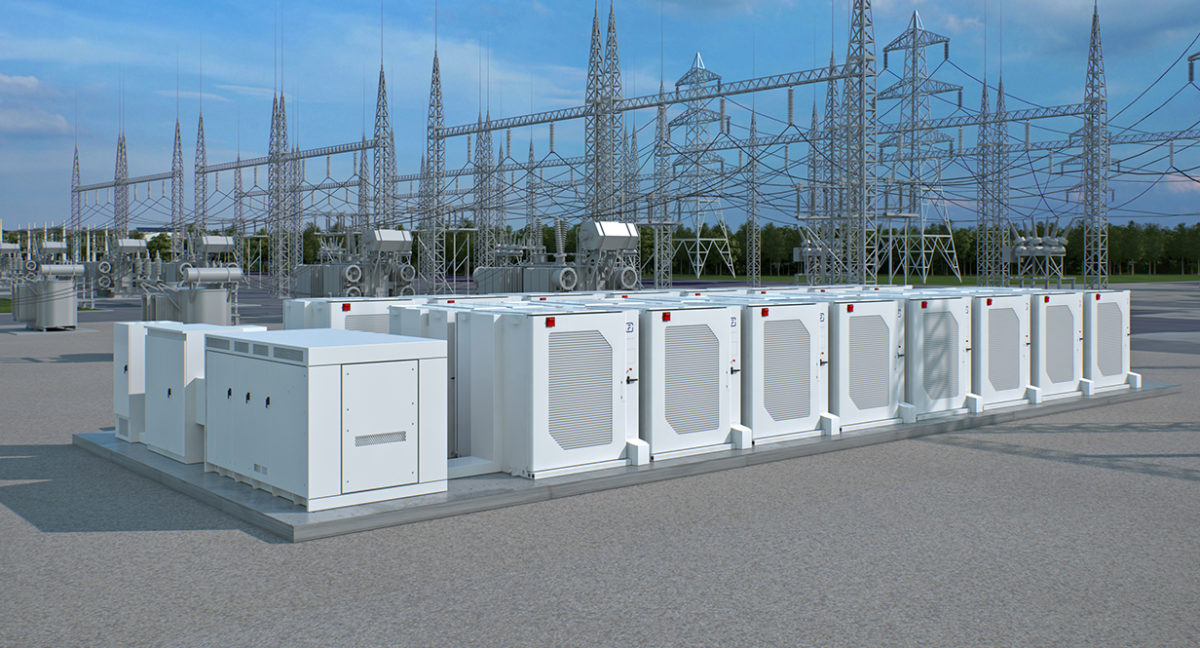Not unlike other large-scale battery storage systems in Australia before it, the 150 MW/150 MWh system being supplied by Fluence at the former Hazelwood coal-fired power station site is shaping up to be a trend-setting project. Developed without government funding, by a multinational utility, and financed by one of Australia’s largest institutional investors, the Hazelwood battery is demonstrating how large sale storage projects can be realised and their future role on the National Electricity Market (NEM).
“The key message about this opportunity at Hazelwood, which was a coal-fired power plant and is now decommissioned, is that [owner] Engie wanted to repurpose it to create a long-term sustainable asset,” Aaron McCann, the GM APAC for Fluence tells pv magazine Australia.
McCann acknowledges that the NEM’s ancillary services markets – known officially as Frequency Control Ancillary Services (FCAS) – will be a significant revenue stream for the Hazelwood battery, but added that charging with cheap energy during low price periods and discharging at times of wholesale price peaks will deliver additional value.

Image: Fluence
“Batteries can help absorb the oversupply of renewable energy when it’s plentiful, and then to redistribute that energy into high value time periods,” said McCann.
The implementation of 5-minute settlements (5MS) in the NEM, from the previous 30-minute settlements, has improved the business case for big batteries, such as Hazelwood, argues McCann.
“The transition to 5MS intervals means assets need to rapidly respond to price signals,” he says. “Fluence’s AI-powered bidding software also allows battery operators to harnesses the full potential of the battery. But the 5MS rule change was certainly one of the factors [behind the project going ahead].”
Fluence is deploying what it describes as its “AI-powered bidding software”, known as the Fluence IQ Bidding Application, at the Hazelwood battery energy storage system (BESS). The company claims the software uses AI to provide more accurate price forecasts and then determines the optimal bidding strategy to maximise revenue for the BESS.
“The AI-bidding application was a huge factor,” says McCann. “It can materially increase the revenue captured by a battery. It does this by co-optimising revenue across all eight FCAS markets and the energy market. It’s all about timing.” He adds that the bidding software has already been deployed in nearly 4 GW of energy assets globally.
The NEM is seeing an increase in the frequency of very low or negative price events in the wholesale market – particularly in areas with very high renewable energy penetration like South Australia. Additionally, during the summer months, electricity demand peaks can deliver periods of exceptionally high spot-market prices – often exacerbated by failures at existing fossil-fuel generators.
Energy Synapse noted in a blog post this week that wholesale prices in South Australia were negative almost 40% of the time in September and October – providing an opportunity for batteries to charge and generate revenues at the same time.
“In Victoria, where Hazelwood is located, negatively priced intervals occurred 32% of the time in both September and October. This is particularly related to spring conditions – a lot of cool sunny days, with low demand. We do expect to see increasingly volatile intraday spreads in most NEM regions,” explains Lara Panjkov, the manager of market applications for Fluence. “This could continue to intensify with a greater penetration of renewables, including rooftop PV, and increasing reliability issues at ageing thermal generators.”
The flipside to low, or negative, price intervals are peak prices – which have been shown to increase steadily in frequency on the NEM over recent years. These can be supplied by the large-scale batteries coming onto the market, including Hazelwood.
“Energy peaking is another strong point,” says McCann. “It offers a potential blueprint for a viable battery storage market in Australia.”
Like the Hornsdale Power Reserve before it, the Fluence team notes that a future expansion of the Hazelwood array has already been factored into its planning.
“There are opportunities to expand [Hazelwood] to respond to market signals in a couple of years,” says Panjkov. “The decision may be made to expand the capacity at any time in the future.”
This content is protected by copyright and may not be reused. If you want to cooperate with us and would like to reuse some of our content, please contact: editors@pv-magazine.com.









1 comment
By submitting this form you agree to pv magazine using your data for the purposes of publishing your comment.
Your personal data will only be disclosed or otherwise transmitted to third parties for the purposes of spam filtering or if this is necessary for technical maintenance of the website. Any other transfer to third parties will not take place unless this is justified on the basis of applicable data protection regulations or if pv magazine is legally obliged to do so.
You may revoke this consent at any time with effect for the future, in which case your personal data will be deleted immediately. Otherwise, your data will be deleted if pv magazine has processed your request or the purpose of data storage is fulfilled.
Further information on data privacy can be found in our Data Protection Policy.